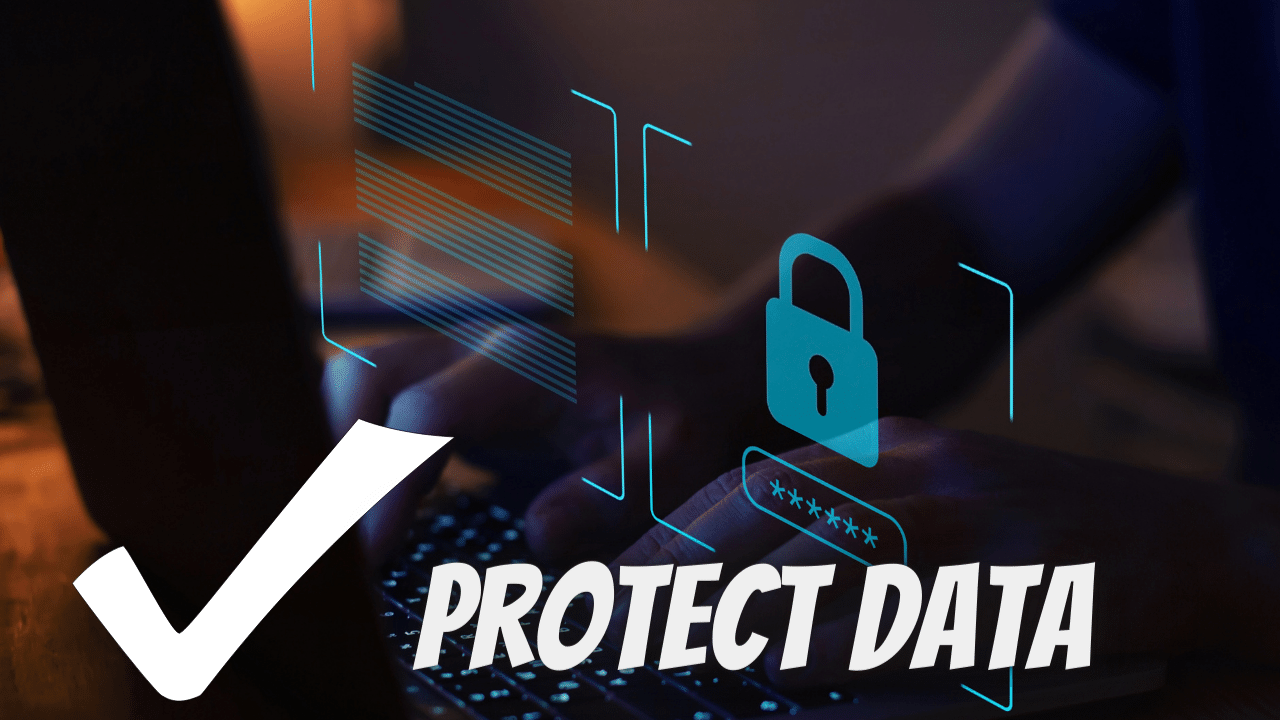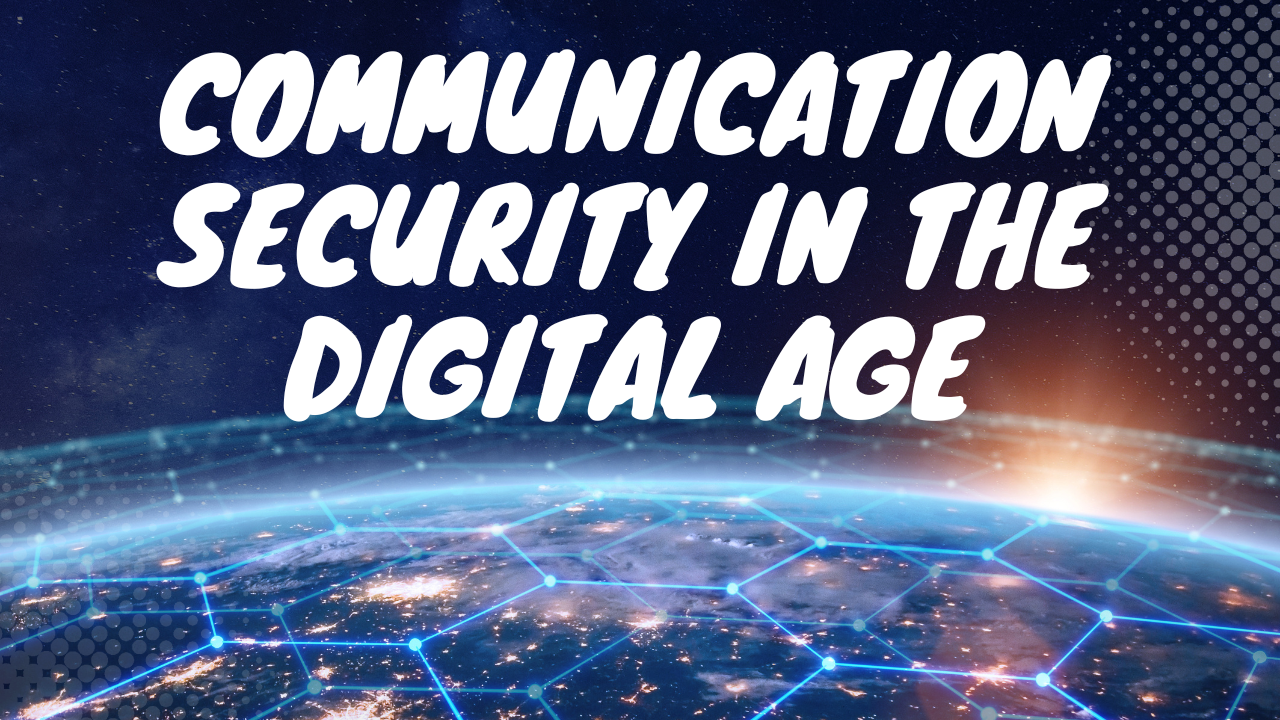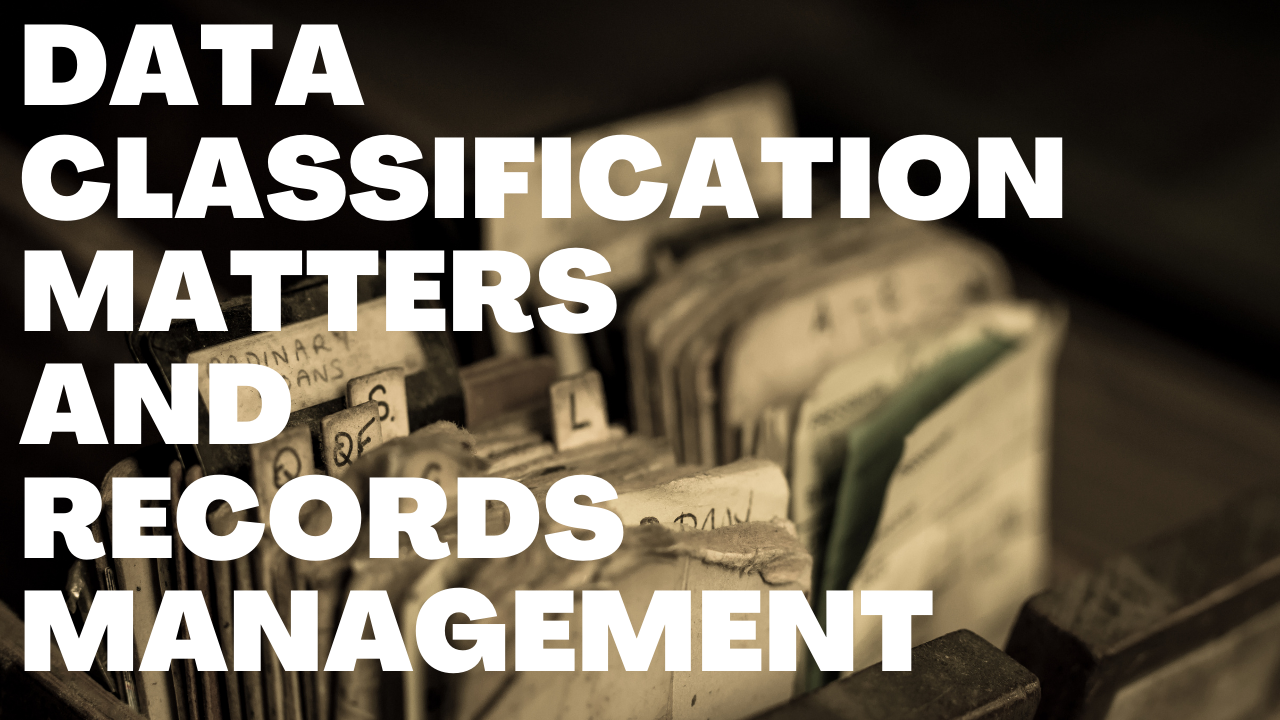Category Archives for Blog

What’s New With Microsoft 365
For roughly three decades, Microsoft has been shaping the tech industry. So it’s no wonder it’s one of the most popular brands globally, producing hardware, software, operating systems, and other solutions.
Continue reading
Microsoft 365 For Winston-Salem Law Firms
Law firms are moving to cloud solutions for data storage, legal document management, cost reduction, and other legal practices.
Continue reading
Three Ways Managed Services Providers Can Help Your Business Grow
Three Ways Managed Services Providers Can Help Your Business Grow
Key Points in This Article
- Working with an MSP can provide businesses with the necessary resources to grow.
- MSPs can help businesses save time by absorbing time-consuming yet fundamental tasks.
- They can also help companies save money by leveraging their insights and experience to increase productivity and offer specialized services where there are gaps in-house.
Business executives often think of Managed Service Providers (MSPs) in the context of their IT departments. They think that when they followed their CIO or IT director’s advice to hire one, they approved an IT solution to IT problems. But MSPs aren’t just technical resources to be leveraged when the network goes down. Reputable MSPs can offer businesses of all sizes across industries the keys they need to unlock their full growth potential. MSPs can leverage their IT expertise to help businesses save time and money, increase productivity, and earn revenue.
How can MSPs help businesses accelerate their growth? Here are three ways that working with a reputable provider can help you grow your business.

Improving Your Business’ Productivity
Working with an MSP, you can determine the best IT infrastructure to support your unique business. And not only can you design an operating environment that helps you maximize employee productivity while minimizing downtime and reducing the risk of system failures. Your MSP can usually manage your infrastructure, saving you time and ensuring your operations run smoothly.
Moreover, many MSPs offer round-the-clock coverage, while most IT departments cannot. MSPs can resolve an overnight network issue before the first employees arrive in the morning, whereas those employees in businesses without one will face some downtime in the morning. And the longer your systems are down, the more revenue and customers you may lose.
MSPs also work with multiple clients across industries. Accordingly, their staff has developed a wealth of knowledge about technical and business problems requiring IT solutions. Drawing on their experience, MSPs can recommend, help you plan, and deploy practical solutions that help you optimize your business’ productivity.
Further, many MSPs can take helpdesk management and other time-consuming fundamental tasks off your hands. In fact, they usually can do so more effectively and efficiently than you can. You will no longer consume valuable in-house staff time with a daily flood of mundane requests from your organization. Letting your MSP partner take over helpdesk management and other similar tasks allows your staff to work on higher-level activities, like strategic planning, revenue-driving IT activities, cybersecurity, and more.
Helping You Minimize Costs
An MSP can save your company the need to hire additional specialists in in-demand areas like cybersecurity. MSP staff can complement the work of your own in-house staff, filling in critical gaps where you have talent deficits. Further, MSPs typically bill using either a recurring monthly fee or a per-use fee model that allows you to adjust the services you need as necessary. If demand begins to surge, you can rapidly scale up the support and services you need. And if you no longer need a specific service, you can quickly remove it from your service contract.
When working with an MSP, businesses often find substantial cost savings in two additional areas. MSPs can often help businesses obtain the hardware and software they need at lower-than-market rates. That’s because MSPs maintain large supplier networks and are often able to secure preferred pricing. And because they can, they can help you obtain and deploy applications and solutions that you’ve long avoided but can substantially impact your business.
Second, many businesses often find that their MSP partners have identified seemingly simple tweaks to existing IT infrastructure that significantly reduce costs and save time. MSPs not only bring their experience working with other clients to bear but also bring an outsider’s perspective. Fresh eyes on a seemingly intractable problem or bottleneck often yield a solution.
Mitigating Risks and Threats
In today’s world, it’s no longer a matter of whether a cybercriminal will target a business but of when. And cyberattacks can be devastating, with the physical, financial, and reputational costs often high enough to put a company out of business. While preventing an attempt is impossible, you can radically reduce the risk of it being successful by designing and implementing the right cybersecurity plan.
But most in-house generalists don’t have the expertise, time, or resources to handle the most sophisticated threat actors. However, MSPs and Managed Security Service Providers (companies primarily offering managed cybersecurity services) can handle these threats. MSPs and MSSPs not only employ some of the best cybersecurity talents around. But because they work exclusively in the field, they can keep up-to-date with the threat landscape in a manner that in-house professionals cannot.
Moreover, MSPs and MSSPs usually have access to sophisticated security tools most businesses have not invested in. This combination of cybersecurity expertise, resources, and dedicated time is what you need to safeguard your business to the greatest extent possible. But cybercriminals are simply one threat.
All it takes is one accident, weather event, or system malfunction to result in potentially catastrophic data loss. And in the event an incident occurs, you must be able to ensure you restore your operations quickly. But many businesses don’t have a backup and disaster recovery plan. Others fail to check to ensure their data is backed up regularly. Still, others lack business continuity plans that can help them recover rapidly. And of those that do, many are inadequate and untested.
MSPs can help businesses put the plans they need in a crisis. Doing so can also free up staff to work on other projects. Moreover, when you let an MSP manage your infrastructure, you can insulate your business from the inherent risks of managing your own own-prem data center. An MSP can help you quickly return to total operational efficiency, which you need when disaster strikes.
These scenarios may not seem to have much to do with growth. But engaging in this kind of defensive work takes staff time and resources, which, when you work with an MSP, can be freed up to focus on revenue and productivity. Additionally, a crisis can quickly torpedo your growth if not properly managed. So it’s crucial to ensure you have the right plans in place to manage one.
Working with an MSP can help you increase business productivity by saving you time in multiple ways. When your in-house IT staff has more time, they can help you with product development, sales platform optimization, and other revenue-driving activities. They can also help other departments become more productive when they have the time to think through and deploy new technology solutions to longstanding problems. MSPs can also help you save money by reducing the need for large-scale hiring and optimizing existing resources. And they can help you safeguard your business, which faces more threats than ever.
Continue reading
What Your Business Needs to Know About Protecting Customer Data
What Your Business Needs to Know About Protecting Customer Data
Key Points:
- The Federal Trade Commission (FTC) sets standards for safeguarding customer information.
- The Safeguards Rule took effect in 2003 but was amended in 2021 after public comment to ensure the rule keeps pace with the current technology.
- The revised rule offers in-depth guidance for businesses — reflecting the core data security principles that all organizations under FTC’s jurisdiction must implement.
- The FTC Safeguards Rule applies to a specific class of financial institutions, such as mortgage companies, creditors, mortgage brokers, and debt collectors.
- The safeguard rules don’t apply to banks, federal credit unions, and loans and savings institutions.
Financial institutions under the jurisdiction of the FTC Safeguards Rule must implement new security controls to protect customer’s financial information. The rule took effect in 2003 but was amended in 2021 after public comment to ensure the rule keeps pace with current technology.
After revision, FTC imposed a deadline of December 9, 2022, with a penalty of $45,000 for violating the rule. The regulations may be news for non-banking financial institutions that are first-time subject to the FTC Safeguards Rule.

FTC Safeguards Rule At Its Core
The FTC Safeguards Rule outlines data security guidelines for financial institutions under its jurisdiction to protect customers’ information and ensure organizations keep pace with current technology.
The rule is part of the more significant 1999 Financial Modernization Act, which first required financial institutions to document how they handle sensitive customer information. After almost two decades, it’s safe to say the technology and data security rules have become ancient.
Following public comment, the FTC updated the Safeguard Rule in 2021 to offer better guidance for organizations. The affected financial organizations have to go over the updates of the FTC Safeguards Rule to ensure they remain compliant with the outlined expectation before the December 9, 2022, deadline.
Who Must Comply with The FTC Safeguards Rule
According to FTC, the rule applies to all financial institutions under FTC’s jurisdiction. The official FTC site defines a financial institution as any organization that engages in activities that are financial in nature or are incidental to such financial activities.
Some financial institutions that FTC gives as examples include:
- Mortgage companies
- Mortgage brokers
- Creditors
- Debt collectors
- Retailers that issue store credit cards
- Property appraisers
- Career counselors who work with clients in the finance industry
- Automobile dealership
- Businesses that print and sell checks to customers
- Organizations that regularly wire money to and from consumers
- Check cashing businesses
- Accountants and income tax return preparers
- Investment advisory company and credit counseling service
- Colleges and universities accepting Title IV funds
The FTC safeguards rule doesn’t apply to banks, federal credit unions, and savings and loan institutions.
What The FTC Safeguards Rule Require Organization to Do
FTC Safeguards requires organizations under its jurisdiction to comply with several requirements. The regulator outlines three elements for every information security program of financial institutions. Your security program must:
- Ensure the security and confidentiality of customer data
- Protect customer data against threats and hazards
- Prevent unauthorized access
The FTC Safeguards Rule outlines nine requirements for compliant security infrastructure. For an organization to be compliant, it must:
- Assign a qualified individual to implement and supervise your organization’s information security program.
- Execute a risk assessment to identify any vulnerability that can compromise the security and confidentiality of customer data.
- Design and implement security controls to mitigate the risk identified through your risk assessment. The controls include access control, encrypting customer data in transit or at rest, implementing multifactor authentication, and secure data disposal.
- Regularly monitor and test the efficacy of your security controls.
- Train your staff to eliminate human weaknesses in your security programs.
- Monitor your service providers to ensure they’re up to the task and meet your company’s security standards.
- Keep your information security program current because the threat landscape is constantly evolving.
- Create a written incident response plan.
- Your qualified individual to report to your Board of Directors
What’s New With the FTC Safeguards Rule
The new amendments have many new requirements, including:
- Policies
- Reports
- Documentation
- Technical and training requirements
The technical requirements call for cybersecurity solutions that are FTC-compliant. Your organization needs to implement a security program with the following:
- Multi-Factor Authentication (MFA): The new FTC Safeguards Rule requires your organization to implement multifactor authentication for any individual accessing any information in your system. Your security system should provide users with more than one piece of evidence to verify their identity. MFA makes it harder for unauthorized people to access customers’ sensitive data.
- Penetration Testing and Vulnerability Assessments: FTC requires your security practices to include continuous monitoring, periodic penetration testing, and vulnerability assessments. The test checks for vulnerabilities in your system before hackers can exploit them. More importantly, the assessments test your cyber-defense capability and responsiveness.
- Monitor and Log User Activity & Access: Another requirement you must meet is implementing policies, controls, and procedures to monitor and log the activity of authorized users. Your organization should be able to detect unauthorized access to prevent the wrong use or tampering of customers’ data.
- Encryption: The Amended Rule requires your information security system to encrypt all customer data at rest and in transit. While data encryption is operationally difficult and costly, FTC has noted several low-cost and free encryption solutions for data in transit.
What is Monitoring & Activity Logging for FTC Safeguards Rule?
FTC says that you must implement a security solution that monitors when authorized users are accessing customer information on your system and detects any unauthorized or suspicious access to customer data.
One way to implement the requirement is to adopt a solution that collects, centralizes, and automatically analyzes your log data for users’ activities. The solution should detect unauthorized access, alert you in real-time, provide the next steps to respond, and allow easy access to historical log reports of user activity for investigations and audits.
The FTC Safeguards Mean Well For Your Business
Financial institutions under FTC should get into compliance the quickest way possible. While the new FTC Safeguards Rule demands a lot from your organization to be compliant, it’s for a good reason. The spike in security threats is concerning, and for every stakeholder in your organization, you need to do your part in managing risks.
Continue reading
All You Need to Know About Azure AD
All You Need to Know About Azure AD
Key Points
- What is Azure AD?
- What are the outstanding features of Azure AD?
- Who uses Azure AD?
- How does one set up a backup Azure AD connect server?
- What are Azure AD licenses?
Azure Active Directory (Azure AD) is a cloud-based identity and access management service that provides a single, centralized access point for managing user identities and permits access to Azure resources. Azure AD also offers a rich set of features that can be used to secure and manage access to on-site and cloud-based resources.
This Azure AD facilitates access to your team’s Microsoft 365, the Azure portal, and thousands of additional SaaS applications. In addition, Azure AD can grant entry to protected internal resources, such as your company’s intranet or its own cloud-hosted apps and services.

The Outstanding Features of Azure AD
Azure Active Directory provides a robust set of features that can be used to secure access to resources, including:
- Multi-factor authentication: Azure Active Directory supports multi-factor authentication, which adds an additional layer of security by requiring users to provide more than one form of identification when logging in.
- Conditional access: Conditional access allows administrators to set conditions that must be met before a user can access a resource.
- Identity protection: Identity protection is a feature of Azure Active Directory that uses machine learning to detect suspicious activity and protect user identities.
- Azure information protection: This service helps organizations protect their data from unauthorized access.
Azure AD is a valuable tool for organizations of all sizes that want to secure access to their resources. It provides a central point of control for managing access to resources, and its rich set of features helps organizations manage access to both on-premises and cloud-based resources.
Who Uses Azure AD?
Azure AD is used by organizations that want to securely store and manage their user identities in the cloud. This includes organizations that want to use Azure AD to manage on-premises resources, such as Active Directory Domain Services (AD DS) or Azure AD Domain Services. Azure AD can be used by the following categories of individuals:
IT Admins
Microsoft Azure Active Directory allows you to control user access to your apps and the data they need. With Azure Active Directory, an additional form of identification may be necessary before gaining access to any sensitive information resources.
The user provisioning process between your on-premises Windows Server Active Directory and cloud apps like Microsoft 365 can be automated with the help of Azure AD. Furthermore, Azure AD offers powerful automated features to help protect user identities and credentials and meet government requirements.
App Developers
Developers can make their apps work with the user’s existing credentials by integrating Azure Active Directory as a standards-based SSO solution. Azure Active Directory also offers application programming interfaces (APIs) that may be used to build apps with a user experience tailored to an organization’s specific needs.
Microsoft 365, Office 365, Azure, or Dynamics CRM Online subscribers
A paid subscription is all one needs to use Azure AD. Everyone who registers for Microsoft 365, Office 365, Azure, or Dynamics CRM Online is also an Azure AD customer. You can begin managing who has access to your synchronized cloud apps.
How to Set up a Backup Azure AD Connect Server
If you have an on-premises Active Directory environment and want to use Azure AD as your identity provider, you must set up and configure Azure AD Connect.
When you install Azure AD Connect, you specify an Azure AD tenant. This is the Azure AD directory that Azure AD Connect synchronizes with. By default, Azure AD Connect installs a single Azure AD Connect server in the Azure AD tenant you specify. This server is called the primary Azure AD Connect server.
You can configure the standby Azure AD Connect server by using the Azure AD Connect wizard or by editing the Azure AD Connect configuration file.
Here are the steps to follow:
- To configure a standby Azure AD Connect server, you will need to install Azure AD Connect on the standby server and then configure it to sync with Azure AD.
- Once Azure AD Connect is installed, you need to configure it to sync with Azure AD. To do this, open the Azure AD Connect tool and click the “Configure” button.
- On the “Configure Synchronization” page, select the “Customize synchronization options” option and click the “Next” button.
- On the “Connect to Azure AD” page, enter the credentials for a global administrator account in Azure AD and click the “Next” button.
- On the “Optional Features” page, select the “Azure AD Connect Health” option and click the “Install” button.
- On the “Ready to Configure” page, click the “Configure” button.
- On the “Configure synchronization options” page, select the “Synchronize All Domains” option and click the “Next” button.
- On the “Outgoing synchronization” page, select the “Start the synchronization process
- On the “Completion” page, click the “Exit” button.
- The Azure AD Connect server is now configured as a standby server.
What Are Azure AD Licenses?
It is possible to upgrade your Azure Active Directory deployment by purchasing a Premium P1 or Premium P2 license. The premium licenses for Microsoft’s Azure Active Directory supplement your current open directory service. The licenses you’ve acquired will provide your mobile users with secure access, improved monitoring, and more thorough reporting on security.
Azure Active Directory Free
This license allows for single sign-on for services like Azure, Microsoft 365, and many SaaS alternatives; user and group management, directory synchronization between the cloud and on-premises; standard reporting; password resets for cloud users.
Azure Active Directory Premium P1
One of P1’s best features is its ability to provide hybrid users with access to both on-premises and cloud resources, expanding the use of the service beyond its free tier. By utilizing cloud write-back features and advanced administration tools like dynamic groups and self-service group management, in addition to Microsoft Identity Manager, your on-premises users can reset their own passwords.
Azure Active Directory Premium P2
In addition to the features found in the Free and P1 tiers, the P2 tier adds Privileged Identity Management, which allows you to find, restrict, and monitor administrators and their access to resources, and provide just-in-time access when it’s needed, as well as Azure Active Directory Identity Protection, which enables risk-based Conditional Access to your apps and critical company data.
“Pay as You Go” Feature Licenses
Azure Active Directory Business-to-Customer, among other optional features, can be licensed separately (B2C). Using business-to-consumer methods can help you offer identity and access control solutions for apps that end up being used by consumers.
In conclusion, Azure AD is a comprehensive identity and access management solution that provides single sign-on (SSO), role-based access control, and directory integration with on-premises Active Directory and other identity management systems. Azure AD provides a robust foundation for identity management in the cloud and helps organizations securely connect to Azure services and other cloud-based resources.
Continue reading
How Safe is Microsoft Teams?
How Safe is Microsoft Teams? Understanding the New Vulnerability Vectra Uncovered
Key Points in This Article
- Cybersecurity researchers at Vectra recently unearthed a new vulnerability in Microsoft Teams that may allow cyber criminals the means to cause considerable harm.
- The vulnerability requires cybercriminals to already have a certain level of access to your network or device.
- Rather than asking what you should do about Teams in light of this vulnerability, you should take every possible precaution and measure to keep your access credentials secure.
It’s a foregone conclusion these days that no matter what software application significant players like Microsoft roll out or security updates they provide, a new vulnerability will invariably be discovered. After all, a veritable army of hackers, cybercriminals, and even nation-state actors work continuously to identify these vulnerabilities for their own purposes. And these threat actors often think in creative ways that corporations are designed to, allowing them to find weaknesses that even experienced cybersecurity professionals overlook.

Understanding Software Application Vulnerabilities
When a software vulnerability is found in an application at a company like Microsoft, Apple, or Google, it quickly makes headlines in not just industry publications but also mainstream media. However, those working in cybersecurity know that such vulnerabilities are pretty common and that not all vulnerabilities pose the same level of risk. Nevertheless, those outside the field often quickly question whether widely used software is safe or whether it should be quickly discarded in favor of a new, unidentified, yet presumed safer measure.
Microsoft Teams recently made some headlines when cybersecurity researchers at Vectra unearthed a new vulnerability in the application. And because of the headlines, it’s likely some business leaders may have found themselves asking their CIOs and IT directors whether Teams was still safe to use.
When such headlines occur, influential IT professionals likely have taken the time to understand the nature of this vulnerability and assess the risks it may pose before making recommendations or taking action. Doing so can help save them from acting precipitously by spending time and money moving to a competing software without determining if a simple patch or other safety measures might eliminate the risk.
So what is the nature of the vulnerability? How much of a risk does it pose? And is Microsoft Teams still safe for businesses like yours to use?
The Microsoft Teams’ Vulnerability Vectra Uncovered
Vectra researchers realized that the Teams holds user authentication tokens in plain text on their desktop devices. When you install and use the Microsoft Teams client on Windows, Mac, or Linux, those credentials can be found on your device even when Teams is closed. A hacker or cybercriminal who has access to your system could use these credentials to access Teams, Outlook, and SharePoint, among other applications, modify files, steal data, and compromise your security.
Moreover, these credentials allow a hacker to take any action you might through the Team interface, bypassing the need for multi-factor authentication. For example, a cybercriminal who accesses the account of a C-suite leader through this Teams’ vulnerability could hijack their Outlook account and steal proprietary information from the business leader’s email account or SharePoint document library.
Cybercriminals could also use their newfound access credentials to send phishing emails to employees throughout the organization. These phishing efforts, coming from the email account of a company leader, could be designed to encourage employees to take actions that further compromise network security, such as downloading malware or ransomware. These are just two possibilities. An enterprising cybercriminal could easily cripple a business or organization in many other ways.
Vectra initially discovered this vulnerability after one of its customers noted that Teams users cannot remove deactivated accounts through the Teams UT when their user account is disabled. Vectra began investigating and learned that Teams’ storage of user credentials was not secure. The company shared its discovery of the vulnerability with Microsoft in August 2022. Perhaps surprising to some, Microsoft did not immediately set about patching this exploit. They confirmed that it could pose a threat and indicated they would address it in a future Teams update.
What Relative Risk Does This Vulnerability Pose?
This response may seem to downplay the possible risk and strike some as cavalier. But while this vulnerability allows cybercriminals with only read access to your system to gain your Teams credentials, the truth is if a cybercriminal gains access to an employee’s account, there are many other ways they can leverage that access at the expense of the business or organization. And it remains incumbent on employees in every department (not just IT) to ensure that authentication credentials don’t fall into the wrong hands.
Businesses and organizations must provide their employees with regular, practical, and current cybersecurity awareness training to ensure that all employees do their part to protect their employers. Employees must understand how to identify and report suspicious activity they encounter, take steps to secure their devices, and avoid downloading applications that could house malware and viruses. They must understand and follow their employer’s cyber security policies without fail to keep their account credentials out of the hands of third parties.
CIOs and IT professionals must develop, maintain, and refine strong cybersecurity policies that cover the entirety of the organization. And they must ensure that all areas comply and that no shortcuts are taken. That means eliminating legacy practices like granting certain users local admin privileges to cut down on help desk requests. It also means continuously testing existing measures to pinpoint vulnerabilities before third parties. A single exploit left unidentified and unaddressed can prove catastrophic. One recent study holds that the average cyberattack costs a company $200,000, which can be enough to put a small business out of business.
So, while Microsoft’s response may seem to downplay the risk, businesses and organizations most at risk from this vulnerability are those with poor fundamental cybersecurity measures in place already. And while business and IT leaders should be aware of this vulnerability, it does not make Microsoft Teams more unsafe to use. Those who are concerned about it should take every available measure to protect their network and device access credentials from falling into the wrong hands before giving any thought to switching platforms. Because no matter which platform you select, if a cybercriminal obtains usernames and passwords, everything is vulnerable.
Continue reading
Communication Security in the Digital Age
Communication Security in the Digital Age
Key Points:
- Cyberattacks are becoming increasingly common, so protecting your business is essential.
- Employees must be trained on good communication security practices to avoid falling victim to cyberattacks.
- Communication security can be boosted by encrypting data, utilizing a secure network connection, and keeping devices up-to-date.
In today’s business world, data breaches and cyber attacks are becoming more and more common. As a result, it’s more important than ever to ensure that your communication channels are secure. What does that mean, exactly? Is it worth the effort? Let’s take a closer look.

What Is Communication Security?
Communication security, also known as ComSec, refers to the measures taken to protect electronic communications from being intercepted and read by unauthorized users. ComSec includes hardware and software solutions, such as firewalls, encryption, and access control measures.
The Importance of Communication Security
When it comes to communication security, it’s essential to understand that there are a variety of ways in which your communications can be intercepted and read by others. Electronic interception of communications is relatively standard. For example, someone else on the network can intercept and read your communications if you’re using a public Wi-Fi network. This is why it’s essential to use a private, secure network whenever possible.
Data breaches and cyberattacks have become common occurrences in today’s digital world. As our lives move increasingly online, we leave behind a digital footprint with every mouse click. This digital footprint is a treasure trove of information for cybercriminals, who can use it to commit identity theft, financial fraud, and other crimes. While there is no foolproof way to prevent a data breach or cyberattack, there are steps you can take to reduce your risk.
How to Boost Communication Security in Your Business
Business communications have come a long way, from emails to instant messaging and video conferencing. As our methods of communication evolve, so do how cybercriminals can exploit them. While you may think your communication methods are secure, there’s always room for improvement when it comes to security.
There are several steps you can take to boost your communication security. Here are a few of the most important:
Utilize a Secure Network Connection
One key way to boost your communication security is to make sure you are always using a secure network connection. This means avoiding public Wi-Fi hotspots and ensuring your home or office network is password-protected. If you must use public Wi-Fi, be sure to only connect to encrypted websites (look for https:// in the URL) and avoid entering sensitive information such as passwords or credit card numbers.
Keep Your Devices Updated
It’s also essential to ensure that all your communication devices are up-to-date with the latest security patches. This includes ensuring that your computer’s operating system and installed applications are up-to-date. Many devices will update automatically, but it’s always a good idea to double-check and make sure everything is updated manually.
Use Encryption Software
One of the best ways to boost communication security is to encrypt all of your data. This means that if anyone intercepts your communication, they would not be able to read it without the proper decryption key.
Check Links Before Clicking
One of the most common ways hackers gain access to our devices and data is through phishing emails. These emails appear to be from a legitimate source but contain links that lead to malicious websites. Before clicking on any links, hover over them with your mouse to see where they are taking you. If the URL looks suspicious, do not click on it.
Inspect Email Addresses
Another way to spot phishing emails is to look closely at the sender’s email address. Frequently, phishing emails will come from addresses very similar to legitimate addresses but with a few small changes. For example, a phishing email from Amazon might come from an address like “amaxon.com” or “a-mazon.com.” Always inspect email addresses carefully before opening any attachments or clicking any links.
Implement Access Control Measures
Access control measures help to ensure that only authorized users can access your communications. For example, you might require employees to use two-factor authentication when logging into company email accounts. This means that they would also need to enter a code sent to their mobile device in addition to a password. This makes it much more difficult for hackers to access your data.
Use a Virtual Private Network
A virtual private network (VPN) is a great way to boost your communication security. VPNs encrypt all your traffic, making it much more difficult for anyone to intercept and read your data.
Train Your Employees on Good Security Practices
Finally, one of the most important things you can do is train your employees on good security practices. Ensure they know how to spot phishing emails, create strong passwords, and not fall victim to other common security threats. The better educated your employees are about communication security, the less likely it is that your business will be compromised by a cyberattack.
Benefits of Good Communication Security Practices
By following the tips above, you can help to ensure that your communication is secure. This is important for both individuals and businesses. Businesses that implement good communication security practices can enjoy many benefits, including:
- Reducing the likelihood of data breaches
- Protecting sensitive information
- Preventing loss of customer trust
- Ensuring compliance with data privacy regulations
- Saving money on costly security breaches
Businesses and individuals who take steps to secure their communications can also enjoy peace of mind knowing that their data is safe from prying eyes. Communication security is more important than ever in today’s increasingly connected world.
Final Thoughts
Communication security should be a top priority for any business or organization in today’s digital age. By taking steps like encrypting data, utilizing a secure network connection, keeping devices up-to-date, and training employees on good security practices, you can help ensure that your business is protected from cyberattacks. As the world becomes more connected, it’s important to remember that communication security is everyone’s responsibility.
Continue reading
7 New and Notable Microsoft Teams Features You Need to Know
Seven New and Notable Microsoft Teams Features You Need to Know
Critical Points In This Article
- Microsoft continuously rolls out new features for Teams users. Here are seven of the most recent and notable improvements.
- Improved search capabilities regarding Chat messages.
- The addition of a soft focus filter for Teams Meetings.
- Greater Teams and Outlook integration.
- Pre-assignment of attendees in Breakout Rooms.
- Improvements to Polls, including ranked choice answering and reusing poll questions.
- Elimination of the default Wiki Tab.
- Shared audio on smartphone Teams Meetings
Microsoft Teams is not only one of the most robust and secure software applications on the market, but users also enjoy the continuous release of new features. Teams auto-update every two weeks, providing users with new productivity-enhancing and security features to help them make the most of the application. Because of the frequency of the updates, it can be hard to keep up with all the changes Teams undergo in a given year. But to help you make the most of Microsoft Teams, here’s a look at some of the most notable changes in 2022.

Improved Search for Chat Messages
One long sought-after improvement is the ability to navigate directly to a Chat message that appears in your Search results. Previously, when you’d search for a message using a person’s name, you’d be taken to a single message without being able to see the full conversation. This approach made it hard for users to find attachments or aspects of the conversation they were looking for.
By the beginning of 2022, Teams had already made notable improvements to their search function. They’d redesigned their interface so you can find all of the references to your search term in Teams on the All tab. If you’re looking specifically for messages, you can search within the Messages tab, which speeds up finding the chat you’re looking for. But now, by honing in on Chats you’ve had with a specific user, you can more easily find the information you’re looking for.
Soft Focus Filter in Teams Meetings
Teams now offer users a Soft Focus feature you can use in Teams Meetings. This feature uses AI to soften your appearance in video meetings, subtly reducing the amount of detail transmitted. As a result, you may appear more hale and hearty, which can help you make a better impression in meetings or when presenting. You can control the extent to which you use this feature in Audio and Video Settings.
Greater Teams and Outlook Integration
Now, in Outlook, you can leverage Teams content more easily. If you open a message and scroll over the new Teams icon that appears at the top right of the message, you’ll see you can share the email to Teams, schedule a meeting in Teams with those who’ve received the message you’re looking at and chat with message recipients more easily.
You can also send Forms more easily to Teams users and through Outlook. In the Send and collect responses option in Forms, you’ll find an option to send a preformatted message with a link to your Form to the Channel you type in. You’ll see a similar preformatted message for Outlook recipients, and when you select the mail client, you’ll be able to email the form link to any email address you want.
Pre-assign Attendees in Breakout Rooms
When you create a meeting and assign it to a Channel, you can now assign attendees to a Breakout Room before the meeting. Many of us have been in meetings where we have to way a few minutes as the Organizer scrambles to assign each attendee to a Breakout Room for the meeting to continue. This feature eliminates that delay allowing you to run a seamless meeting.
Once you’ve created a meeting and assigned it to a channel, simply head to the meeting on your calendar, open it, and click Edit. You’ll see a Breakout Rooms tab, which, when selected, will allow you to create the number of breakout rooms you need and then assign attendees automatically or manually to those rooms.
Poll Improvements
You can now add a Polls tab to your meeting, allowing you to incorporate polling more easily. There’s also a new option that allows you to create Polls where participants can rank the different options in your Poll. If you’re looking to get feedback on, say, new designs or projects, this feature can really come in handy in helping you gauge your audience’s thinking.
You can now also reuse the Poll questions you’ve created easily. In the Polls tab, you’ll find a My recent tabs option. Selecting it will show you questions you’ve already used on the right-hand side. Click on the question(s) you want to use, select Save as a draft, and you’ll see they’ve been added to the new Poll you’re creating.
Elimination of the Default Wiki Tab
If you’re a commercial teams customer, Teams will no longer add a default Wiki tab when you create a new Channel. You can add a Wiki if you want, and any Wikis that have already been created will remain intact. However, new Channels will no longer automatically include this tab.
Before this change, some users stumbled across a hidden danger. These Wikis were stored in a SharePoint library. Removing the Wiki tab from the Channel would permanently delete the SharePoint file and all of the Wiki content with no chance of recovery. To avoid this, knowledgeable IT administrators and MSP staff might spend extra time deleting the Wiki tabs in Teams provisioning solutions. However, by eliminating the default addition of a Wiki to each Channel, time can be saved, and this potential mishap can be avoided entirely.
Shared Audio on Smartphone Teams Meetings
You can easily share audio if you’re on a Teams meeting on iOS or Android. Simply enable the new Share Audio feature, and you can now share audio with participants, such as through a video or music app, when you’re using the Share Screen function. This function works for iOS 13 or later and Android 10 or later.
Continue reading
Why Small Businesses Must Implement Ongoing Risk Management
Why Small Businesses Must Implement Ongoing Risk Management
Key Points
- Risk management is identifying, assessing, and managing risks to help protect against potential losses or liabilities.
- Risks can come from financial, operational, legal, or reputational risks.
- By identifying and assessing risks early on, you can take steps to mitigate or avoid them altogether.
The traditional security perimeter is no longer enough to keep organizations safe. Cybercriminals are increasingly sophisticated and can easily bypass perimeter defenses. Preventing sophisticated attacks requires a new approach that starts with risk management and extends security throughout the entire network. Risk management is vital for small businesses. Implementing ongoing risk management as a standard practice can help protect your small business against potential losses and liabilities.

What Is Risk Management?
Risk management is a proactive approach to security that starts with identifying assets and vulnerabilities and then implementing measures to protect against potential threats. By taking a proactive approach, organizations can reduce the likelihood and impact of security breaches.
Risk management starts with a risk assessment, identifying and evaluating potential security risks. Once identified, organizations can develop and implement strategies to mitigate or reduce those risks.
Risk management strategies can include developing security policies and procedures, implementing security controls, and increasing employee awareness. Organizations must continually monitor and adjust their risk management strategies as new risks emerge, and existing risks change.
Effective risk management requires a commitment from everyone in the organization, from the CEO to the front-line employees. When everyone understands their role in security and works together to reduce risks, organizations can better protect themselves from potential threats.
What Are the Components of Risk Management?
There are four main components of risk management:
- Asset identification: Organizations must first identify their assets, which can include things like data, systems, and people.
- Vulnerability assessment: Once assets have been identified, organizations must assess their vulnerabilities. Vulnerabilities are weaknesses that can be exploited by threats.
- Threat assessment: Organizations must then identify the potential threats to exploit their vulnerabilities.
- Risk mitigation: Once risks have been identified, organizations can implement strategies to mitigate or reduce those risks. Risk mitigation strategies can include developing security policies and procedures, implementing security controls, and increasing employee awareness.
These components work together to form a comprehensive risk management strategy. Organizations can better protect themselves from potential threats by taking a proactive and holistic approach to security.
What Are the Benefits of Risk Management?
There are many benefits of risk management, including:
- Reduced likelihood of security breaches: Organizations can reduce the likelihood of a security breach by identifying assets and vulnerabilities and implementing security measures.
- Reduced impact of security breaches: If a security breach does occur, risk management can help reduce the impact. Organizations can limit the damage and quickly recover from a breach by having policies and procedures in place.
- Improved security posture: A proactive approach to security can help organizations improve their overall security posture. Organizations can become more resilient to potential threats by identifying and addressing risks.
- Improved compliance: Risk management can help organizations meet compliance requirements related to data security and privacy.
Implementing Ongoing Risk Management in Your Business
As a small business leader, you always seek ways to protect and grow your company. One way to do this is by implementing an ongoing risk management strategy.
Here are a few tips to help you get started:
- Identify potential risks. The first step in risk management is identifying potential risks that could affect your small business. This can be done through various methods, such as brainstorming sessions, conducting surveys or interviews with employees, or reviewing previous incidents. Once you’ve identified potential risks, you can begin assessing them.
- Assess the likelihood and impact of each risk. The next step is to assess the likelihood and impact of each risk. This will help you determine which risks are more serious and must be addressed first. To assess the likelihood of a risk, consider how probable it is that the event will occur. To assess the impact of a risk, consider the potential financial or reputational damage that could be caused by the event if it were to occur.
- Develop mitigation strategies. Once you’ve identified and assessed the risks, you can develop mitigation strategies. Mitigation strategies are designed to reduce the likelihood or impact of a risk occurring. For example, if you’re concerned about the possibility of a data breach, you might implement safeguards such as encryption or two-factor authentication for your digital systems.
- Implement control measures. Control measures are designed to prevent or detect errors or fraud. For example, control measures for financial risks might include implementing Independent Reviews or separating roles within your accounting department so that one person cannot record and approve transactions.
- Monitor and review regularly. Risk management is not a static process; it should be revisited regularly so that new risks can be identified and existing mitigation strategies can be updated as needed. Depending on the size and complexity of your small business, this might be done quarterly, semi-annually, or annually.
By following these tips, you can help ensure that your small business is prepared for any potential risks that may come it’s way. Implementing ongoing risk management as a standard practice will help protect your business against losses—and allow you to sleep better at night knowing that you’re prepared for anything.
Applying Zero-Trust Principles to Your Risk Management Strategy
Zero-trust is a security principle that states that organizations should not automatically trust anything inside or outside their networks. Instead, all users, devices, and resources should be verified and authenticated before being granted access. Zero trust prevents cybercriminals from penetrating your organization by validating every user, device, and connection trying to access data or systems.
Adopting and implementing a zero-trust security strategy is not just about investing in the right technology. It’s about changing the way your organization thinks about security. Zero trust requires a shift in mindset from perimeter-based security to identity-based security. Organizations that have yet to make this shift are at a greater risk of data breaches and expensive cyber attacks.
According to IBM’s Cost of a Data Breach 2022 report, 41% of organizations revealed they have deployed a zero-trust security architecture, while the other 59% have not. The report also revealed the organizations that have deployed a zero-trust security architecture saved over 1 million dollars in data breach costs.
Zero trust is no longer a new or emerging technology – it’s a must-have for any organization looking to protect its data and systems. As the need for better security grows, so does the adoption of zero trust.
Wrapping Up
Risk management is an important part of running a successful small business. By identifying potential risks and implementing mitigation strategies, you can help protect your business against losses. Review your risk management strategy regularly to ensure that it stays up-to-date, and don’t hesitate to seek professional help if you need it.
Continue reading
Data Classification Matters And Records Management
Why Data Classification Matters for Records Management Success
Key Points:
- Records management (RM) is the administration of digital or paper records. It includes the creation, maintenance, and destruction of records.
- RM aims to ensure that records are created and maintained to facilitate their retrieval and use while ensuring their authenticity, integrity, and reliability.
- Data classification is a core component of records management. It organizes data into categories to manage it more effectively.
With the proliferation of electronic records, it is essential to classify and manage them in accordance with their value and legal requirements. Discussions surrounding records management and data classification often lead to debates. Stakeholders tend to have very different opinions on what should be done with an organization’s data and how that data should be managed. However, some general principles can help to guide these discussions and lead to more productive outcomes.

Records Management: A New Approach to an Old Problem
As the world becomes increasingly digital, organizations find that their traditional methods of managing paper records are no longer effective. As a result, many are turning to records management solutions that can help them manage both digital and paper records. Records management is not new, but it has changed how it is approached.
In the past, records management was often seen as a compliance issue. Organizations were required to keep certain records for a certain period, and they needed to ensure that those records were properly stored and maintained. While compliance is still an important part of records management, the focus has shifted to include a wider range of benefits.
Today, records management is seen as a way to improve efficiency, save money, and protect an organization’s data. By properly managing their records, organizations can reduce the storage space they need, make it easier to find and retrieve information, and ensure that their data is properly protected.
There are several benefits to implementing a records management solution, including:
- Improved efficiency and productivity: A records management solution can help organizations more effectively manage their records, saving time and money.
- Reduced risk: A records management solution can help organizations to reduce the risk of losing important records.
- Compliance: A records management solution can help organizations to meet their legal and compliance obligations.
- Improved decision making: A records management solution can help organizations to make better decisions by providing easy access to records.
To have an effective records management program, it is important to first establish a clear understanding of the organization’s data and its location. This can be difficult, as data is often spread across different departments and systems. Once the data has been identified, it needs to be classified into different categories. This will help to determine how the data should be managed and what level of protection it requires.
Once the data has been classified, it is important to establish management rules and procedures. These rules should be designed to ensure that the data is accessible when needed and protected from unauthorized access. The procedures should also be reviewed regularly to ensure they are still effective.
It is also important to plan how data will be disposed of when it is no longer needed. This plan should ensure that the data is securely destroyed and that no unauthorized access to the data is possible.
How Do I Get Started With Records Management?
There are four basic steps involved in getting started with records management:
- Determine what type of system will work best for you. There are many different ways to organize your papers and documents, so take some time to explore your options and find what works best for you.
- Identify which papers and documents need to be kept. Not everything needs to be saved forever, so it’s important to know what can be safely discarded and what needs to be kept long-term.
- Store your papers and documents in a safe place. Once you’ve determined what needs to be kept, ensure it’s stored properly, so it doesn’t get lost or damaged.
- Maintain your system on an ongoing basis. Implementing a records management system is not a one-time task; it’s something you’ll need to do on an ongoing basis as new papers and documents come in.
What Is Data Classification?
Data classification is organizing data into categories that can be used to manage the data more effectively. One of the most important aspects of data classification is determining how data should be categorized. Data classification schemes typically use a hierarchical structure to organize data.
However, there are many different ways to approach data classification. The best approach will vary depending on the type of data being classified and the goals of the classification scheme. In general, however, data classification schemes should be designed to meet the following criteria:
- The categories should be clearly defined, so there is no ambiguity about what data belongs in each category.
- The categories should be mutually exclusive so that each piece of data can only be classified into one category.
Workplace data can be classified into four primary categories: public, internal use only, confidential, and restricted.
- Public data is information that can be accessed by anyone without restriction. This category includes information typically published by the organization, such as press releases, product descriptions, and marketing materials.
- Internal use only data is information that is not intended for public release. This category includes employee records, financial data, and trade secrets.
- Confidential data is information that must be kept secure and is only accessible to authorized individuals. This category includes supplier contracts, customer lists, and product development plans.
- Restricted data is information subject to special restrictions, such as legal limitations on its use or disclosure. This category includes personal Identifiable Information (PII) and Health Insurance Portability and Accountability Act (HIPAA) data.
There is a reason why data classification is a critical component of effective records management. Without proper data classification, your records management efforts are likely to fail. Data classification provides a framework for understanding the value of data and how it should be protected. When data is properly classified, organizations can make informed decisions about how to store, manage, and dispose of data.
Increasing Records Management Compliance in Your Organization
Records management compliance is critical for any organization. Maintaining accurate records helps to ensure the safety and security of your business operations and protect your customers, employees, and other stakeholders.
There are several steps you can take to increase records management compliance in your organization, including:
- Define your records management objectives and goals.
- Implement policies and procedures for records management.
- Educate employees on records management compliance.
- Conduct regular audits of your records management system.
- Implement technology solutions to automate records management.
Data governance is critical to the success of any organization. You must ensure that your organization complies with records management regulations and best practices. Implementing these practices can help safeguard your data and improve your bottom line.
Wrapping Up
When it comes to records management, there is no one size fits all solution. The best approach depends on the organization’s specific needs and the type of records being managed. Many different records management systems and software are available, so it is important to research to find the one that best suits your needs. Whatever system you choose, it is important to ensure that it is properly implemented and regularly reviewed to meet your organization’s needs.
Continue reading